OCHIN and OCHIN Data
About
OCHIN is a nonprofit leader in health care innovation and operates the most comprehensive database on healthcare and outcomes of primary care patients in the United States, including 1.3 million rural residents. The OCHIN Epic EHR data warehouse aggregates electronic health record (EHR) and area-level data from over 280 health systems with over 2,400 clinic sites throughout the United States (>40 states). Approved AIM-AHEAD projects can obtain access >10 years of longitudinal OCHIN Epic ambulatory EHR data.
The data come from outpatient community-based health centers (CHCs), which deliver comprehensive, high-quality primary care and other services such as dental, pharmacy, mental health, substance abuse treatment, and social work care regardless of patients’ ability to pay.
Explore the OCHIN Database through Cohort Discovery, a web-based software tool for obtaining counts of patients matching user-specified inclusion/exclusion criteria. To gain access to Cohort Discovery, AIM-AHEAD program applicants must have completed and be up to date with standard training in Human Subjects Research and Responsible Conduct of Research. Access will be granted within 3 – 7 business days.
About the OCHIN Database
- Data years available for AIM-AHEAD Year 4 awardees: 2012-2024
- Data will be provisioned in OMOP format
- Patients with one or more ambulatory, telehealth, or dental visit at a member clinic site on or after 1/1/2012
- Records from institutionalized patients and neonates (<28 days old) are excluded
| Key Characteristics of OCHIN EHR Data | ||
| Variables | Percent | Patient Count |
|---|---|---|
| Total all-time patients Total active patients (seen in last three years) |
8,634,916 5,591,910 |
|
| Encounters | >170 million | |
| 100% and Below Federal Poverty Level (FPL) | 40.4% | 3,493,065 |
| 101% - 200% FPL | 33.4% | 2,887,174 |
| Medicare | 7.5% | 648,777 |
| Medicaid | 48.3% | 4,171,776 |
| Uninsured | 25.7% | 2,217,214 |
| Rural | 15.5% | 1,342,843 |
| Diabetes | 10.7% | 730,202 |
| Hypertension | 20.8% | 1,423,945 |
| Asthma | 8.6% | 585,846 |
| Hyperlipidemia | 19.2% | 1,309,627 |
| Mental/Behavioral Health | 38.7% | 2,641,577 |
| Obesity | 12.1% | 824,152 |
| Available Data at a Glance | ||
|---|---|---|
| Domain | Example variables | |
| Demographics | ||
| Encounters | Encounter type, provider type | |
| Diagnoses (from encounters, problem list, and patient-reported medical history) | ICD-9 and ICD-10 diagnosis codes | |
| Procedures (from encounters and patient-reported surgical history) | CPT and HCPCS procedure codes | |
| Vitals | BP, BMI, and tobacco use measurements | |
| Laboratory results | Lab type (standardized to LOINC),date | |
| Medications (prescribing and dispensing) | RxNorm, NDC, medication name, dose, quantity, route, frequency, refill count. | |
| Patient-reported outcomes | PHQ2, PHQ9, AUDIT, food, housing, transportation, education, employment | |
| Immunizations | Immunization type, dose, date | |
| Area-level data | Geographically linked area-level indicators at the Census tract and ZCTA levels | |
OCHIN Patient Distribution by Facilities' State

Data Access
AIM-AHEAD-awarded projects approved by OCHIN’s Data Access Committee are provisioned a custom HIPAA Limited Dataset, per each project’s specific aims, accessible via the AIM-AHEAD Service Workbench.
Access to data requires:
- A data specification worksheet approved by OCHIN
- An IRB determination
- An executed Data Use Agreement
Path to OCHIN Data Access: Pre-Award

Path to OCHIN Data Access: Post-Award


